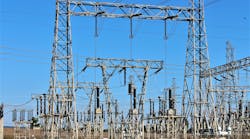Periodically, I look into news and industry reports to arrive at personal conclusions regarding the progress of innovations and the adoption of new technologies in the electric power industry. Last year about this time I investigated the adoption of bulk energy storage using battery technology and attempted to answer the question: “Is utility-scale advanced battery storage now a mainstream solution?” Multiple noteworthy events and planned activity in this arena again indicate its time to check the pulse on this issue.
Let’s start with recent information. Arizona Public Service just announced a plan to install a 50 MW, 135 MWh battery designed to shift the output of an adjacent solar farm to deliver power coincident with APS’ peak demand. Now, we can’t go all gaga just because a utility announces a big “planned” project. It happens all the time. Two things make this project notable, however. First is the storage capacity. Fifty MW and 135 MWh is greater than 20% and 40%, respectively, of the entire capacity of bulk storage projects installed in 2016 according to data from GTM Research/ESA U.S. Energy Storage Monitor. Second, this project is being developed by a second party, First Solar, under contract to APS. While economics and other contract details are not available, the fact that this project is part of a commercial transaction between multiple parties increases expectations of timely fulfillment.
Another announcement, again involving the pairing of bulk storage with renewables, came from Xcel Energy around the end of 2017. Xcel’s all source RFP resulted in 11 wind-combined-with-battery storage proposals (5,700 MW) at an average price of $21 per MWh and 87 solar (PV) combined with battery storage proposals (16,725 MW) at an average price of $36 per MWh. The average pricing of these proposals is significantly below prior published contract prices. Unfortunately, there are no details as of yet as to the exact storage capacity of the projects and the final negotiations have not been announced. Notwithstanding, the takeaway is that numerous entities appear willing to enter into contracts for very competitively priced, large-scale projects involving energy storage.
Changes in Rules
When I looked into the progress of advanced battery storage in the power industry last year, one of the constraints I noted was that developers were increasingly at odds with existing market rules designed for different resources or older technologies. Examples included PJM participants battling over changes to the ISO’s frequency regulation rules and MISO complaints surrounding market policies that adversely impacted lithium-ion battery performance and longevity. It seemed the adoption of advanced battery storage as a mainstream option was being impeded by existing rules and policy. The last new occurrence I want to note may change all of that.
A few weeks ago the Federal Energy Regulatory Commission issued new orders on energy storage participation in wholesale power markets and frequency response services provided by generators. The agency directed regional grid operators to develop new tariffs for storage market participation that enable storage resources to provide multiple market services and to set power market prices as purchasers and sellers of energy. This allows storage to provide energy, capacity and ancillary services and it requires respect of the operational characteristics of storage technologies such as discharge duration or state-of-charge requirements. These provisions will become effective one year after the tariff provisions proposed by grid operators are approved. FERC noted that its rule will not only increase competition in wholesale markets but also assist with system resiliency.
We continue to see dramatic advances in advanced battery storage technology. Utilities across the country are including advance battery storage in their integrated resource plans. Perhaps more telling is that expected performance and cost have reached the point at which the development community is willing to offer long-term supply contracts at very competitive prices for advanced storage projects. This indicates both the development and financial communities believe the risks associated with the technology are manageable. Finally, FERC has made it clear that it intends to remove any remaining regulatory barriers for advanced battery storage. At this point, it would be downright difficult to argue that utility scale advanced battery storage is not a mainstream solution for the industry. Utopia may be a bit of a stretch…


